Europe’s Secret Wine Regions Revealed
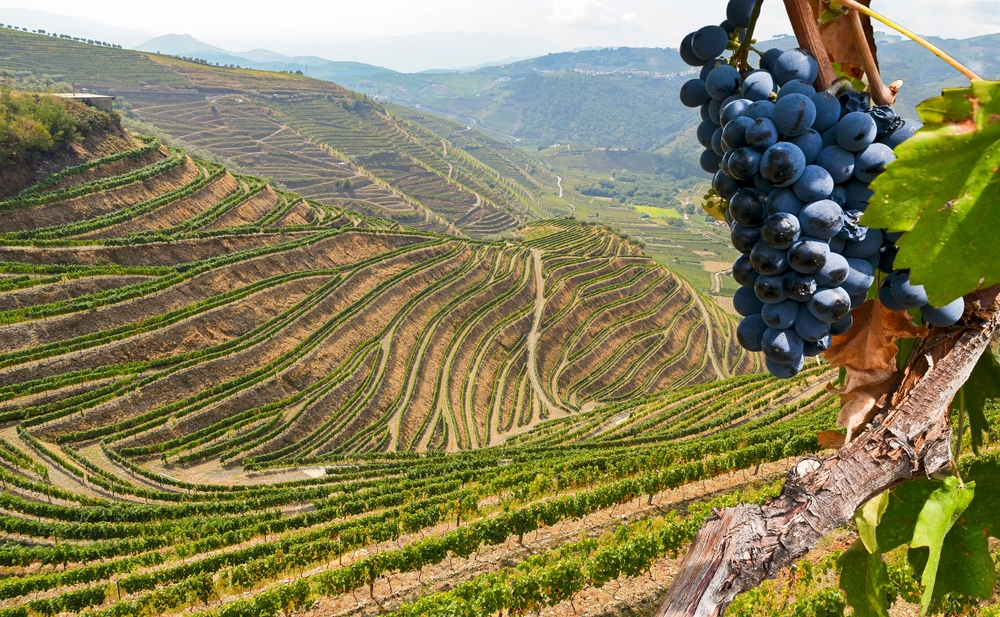
Ever wondered if there’s a way to skip the tour buses, talk to the winemaker, and taste great wine without paying “famous region” prices?
You’re in the right place. I’ve spent years tracking down under-the-radar European wine regions where tastings feel personal, prices are sane, and the views make you put your phone away. In this guide, I’ll give you clear, practical answers—when to go, how to get around, what to taste—so you can plan a trip that’s relaxed, memorable, and legitimately delicious.
The problem with “famous” wine trips
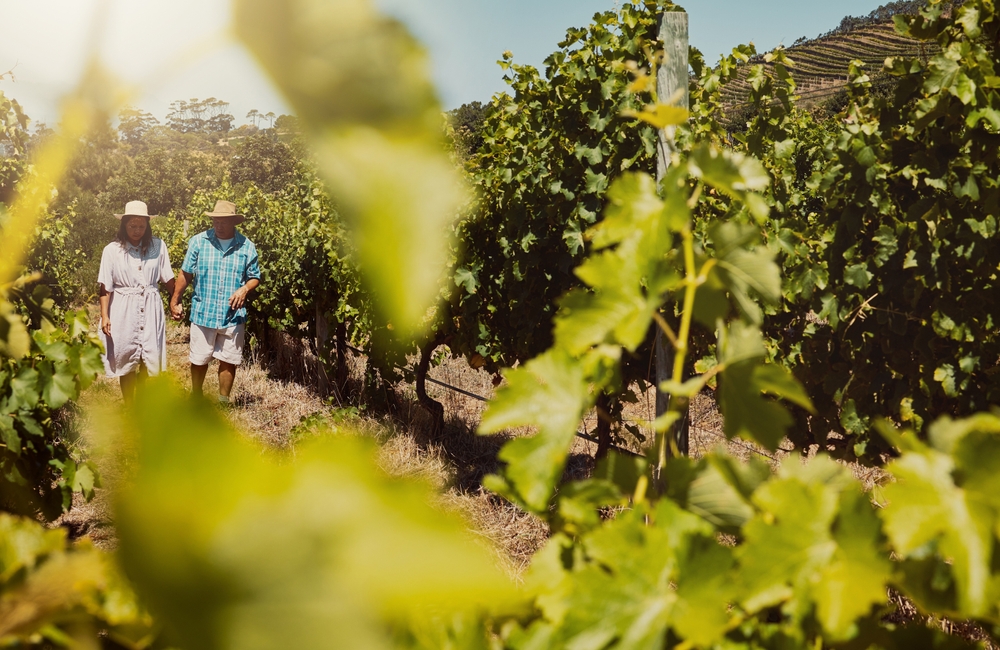
Big-name regions can be wonderful—but they can also drain your time, budget, and patience. Here’s what I often see in the headliners:
- Packed tasting rooms: Bus groups flood in, and your “tasting” becomes a speed run.
- Rushed, impersonal flights: Staff don’t have time to chat, and you miss the stories that make a bottle unforgettable.
- High tasting fees: In hotspots, fees can jump to €20–€40+ per person, sometimes with small pours or strict time slots.
- Logistics that eat your day: Long transfers, heavy traffic, and limited appointment windows make it hard to visit more than a couple of estates.
I love the icons, but I also love this: walking into a family-run cellar where the owner pours your glass, answers your questions, and recommends a local trattoria or bistro down the road. That’s what this guide is all about.
“If you have to queue to taste, you’re in the wrong valley.”
Wine tourism has exploded over the past decade—UNWTO has called it one of the fastest-growing niche segments of travel (Global Report on Wine Tourism). That growth is great for wineries—but it also means the most famous areas can feel overrun in peak months. The good news? Europe is full of world-class wine regions where the buses haven’t caught on.
My promise: crowd-free wine adventures that feel special
Here’s what you can expect from the regions I recommend:
- Fantastic wine, fewer people: Think crisp alpine whites, soulful mountain reds, and volcanic terroir—without the chaos.
- Human connections: Hosts who have time to talk through vintages, soils, and food pairings.
- Easy planning: I’ll point to places reachable by train + short taxi/e-bike, and flag where a car helps.
- Good value: Tasting fees often land around €5–€15, frequently waived with a bottle purchase.
- Clear guidance: When to go, how to book, what grapes to look for, and simple, scenic routes.
You’ll come away with a short list that’s realistic to book, fun to navigate, and full of bottles you’ll want to bring home.
Who this is for (and how I chose)
This guide is for anyone who wants great wine without the crowds:
- Curious tasters who care about character over labels.
- Travelers on a fair budget who’d rather spend on memorable meals than pricey tasting rooms.
- People who enjoy the journey—walkable villages, bikeable roads, and lazy lunches with a view.
How I picked each region:
- Unique grapes and styles: Wines you can’t just find anywhere—think alpine Nebbiolo, saline island whites, or ancient local varieties.
- Strong local culture: Places where wine, food, and tradition are inseparable.
- Stunning scenery: Mountains, river gorges, lava fields, and stone-walled terraces.
- Value and welcome: Fair tasting fees, simple booking, and hosts who are genuinely happy to pour.
- Real-world feedback: My on-the-ground notes plus reader tips sent through the blog.
Ready to skip the crowds and still drink brilliantly? Next up, I’m laying out what actually counts as a “secret” wine region in Europe—and the best seasons and transport tricks to make your trip smooth. Curious when to go and whether you need a car? Let’s answer that next.
What counts as a “secret” wine region in Europe?
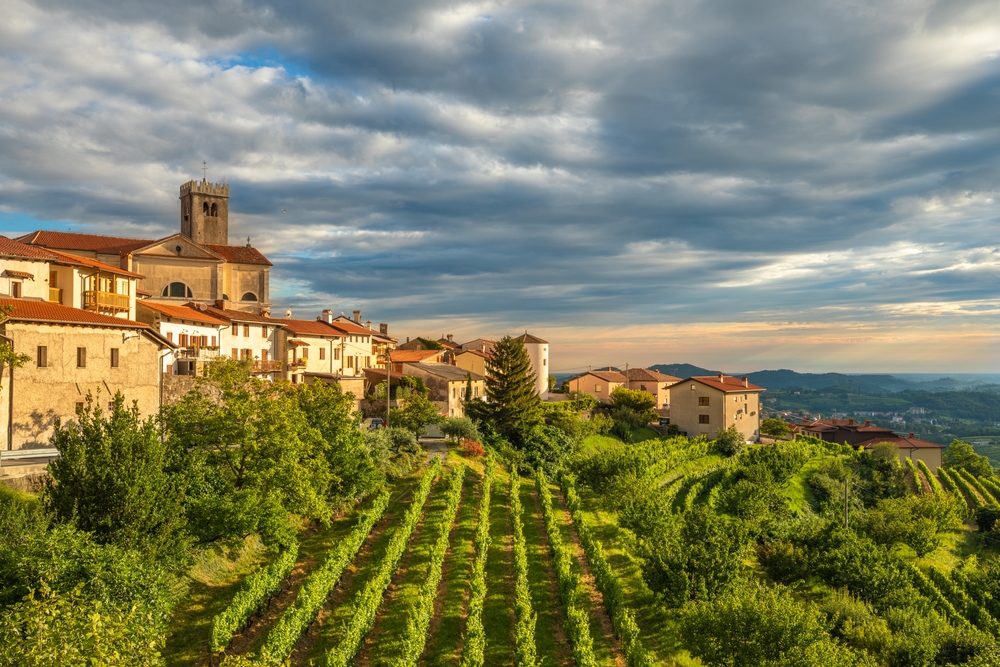
I call a place “secret” when the wines make you stop mid-sip, the stories are personal, and you’re tasting in someone’s courtyard instead of standing behind six tour buses. These are the spots where the map feels a little blank—and that’s the fun.
“You don’t need a famous postcode to find a memorable bottle—you need time, curiosity, and a door that’s still opened by the winemaker.”
Here’s how I spot them on the ground:
- Family-run estates where the person pouring the wine helped pick it last week.
- Walkable villages or clusters of cellar lanes (think “sklepy” in Central Europe) that let you taste on foot or by e-bike.
- Honest pricing—tastings around €5–€15 and often waived if you buy a bottle.
- Distinctive grapes and styles you won’t confuse with the usual suspects.
- Few tour coaches, lots of locals. If the town square has more tractors than tour vans, you’re in the right place.
Real-world example: one spring afternoon in a small alpine village, I stood in a cool stone cellar while the owner carved cheese and poured a pale red that smelled like strawberries and forest air. No booking platform, no queues—just a paper calendar and a smile. That’s the energy you’re after.
When is the best time to visit vineyards in Europe?
I plan for shoulder seasons when roads are open, winemakers have time to chat, and the vineyards look alive without the heat haze.
- Spring (April–June): Fresh greens, blossom in the vines, mild temps. Cellar doors are open, and logistics are easy. In some regions, May brings local wine festivals and long daylight for slow dinners.
- Early fall (September–October): Harvest buzz, golden hills, and fuller lineups to taste. Many estates are busy, so book early—some pause visits on peak picking days.
- Summer (July–August): Good for picnics and long evenings. It’s busier; coastal and mountain regions stay comfortable, but heatwaves happen—book tastings in the morning and lunches under shade.
- Winter (November–March): Quiet roads, cozy cellars, lowest prices. Fewer estates open daily, but those that are will pour with heart. Check hours and aim for Fridays/Saturdays.
Useful reality checks:
- August closures: In parts of France and Italy, some producers take summer holidays; always confirm hours.
- Weekends: Saturday mornings can be lively, Sundays are often family days—many cellars close.
- Shoulder season sweet spot: The European Travel Commission keeps showing strong traveler interest for shoulder months—good news if you want fewer crowds and better rates.
Do I need a car, or can I go by train/bus?
You can see a lot without a car if you choose the right base and think in short hops. I like to stitch together trains, taxis, and e-bikes—your liver and your stress levels will thank you.
- Car-light plan: Pick a town with a train station and 3–6 producers within 3–8 km. Book an e-bike, pack water, and loop gently between tastings.
- Taxi safety net: Save a couple of local taxi numbers and ask your first host to call ahead for pickups. In much of Central and Eastern Europe, apps like Bolt or FREE NOW cover small towns.
- Bus hacks: Alpine and rural regions often run reliable regional buses; check the tourist office site or “Transport + [region name]” on Google. Screenshot the return times.
- If you rent a car: Keep days short (2–3 tastings), book lunches, and spit—every pro does. Small roads can be narrow and scenic; leave buffer time between stops.
Car-free examples that work well:
- Small alpine towns: Train to a lakeside base, then bus or e-bike to nearby caves.
- Central Europe cellar lanes: Local trains to wine villages; rentals waiting by the station.
- Northern Spain valleys: Train to a regional hub, then short taxi rides along river routes.
Planning tip: use The Man in Seat 61 for rail options and build a shortlist in Google Maps with opening hours visible offline.
Is wine tasting expensive in Europe?
In the regions I’m sending you to, not at all. Tastings typically feel like a neighborly welcome, not a luxury upcharge.
- Typical tasting fees: €5–€15 for 3–6 wines; often waived if you buy bottles.
- Estate tours: €10–€25 for a vineyard/cellar walk plus a flight.
- Bottle prices at the cellar door: Great everyday finds from €8–€15; special single-vineyard bottles €18–€35. Top cuvées can go higher, but value stays strong.
- Regional snapshots (what I’ve paid recently):
- Alpine whites: €6–€12 tastings; bottles €10–€22.
- Central Europe cellar lanes: 100–200 CZK/€4–€8 for flights; bottles often €7–€15.
- Volcanic islands: €10–€20 tastings; bottles €15–€30 for mineral-driven whites.
Money smarts I use:
- Cash cushion: Small, family estates may be cash-only or prefer it for tastings.
- Share flights: If you’re two people, one full flight plus a side glass keeps costs and alcohol intake in check.
- Snack smart: Ask for a simple local plate—bread, cheese, olives. It’s affordable and makes tasting easier on your palate.
Do I need to book tastings in advance?
Usually yes—especially with family cellars where “the team” is the owner, a cousin, and a dog. A quick note 24–72 hours ahead gets you a warmer welcome and more focused pours.
- How far ahead:
- Harvest and weekends: 1–2 weeks is safest.
- Shoulder weekdays: 24–72 hours is often perfect.
- Winter: Some estates open by appointment only—ask a few days ahead.
- Best channels: Email first (often listed on Google Maps). If no reply, try Instagram DM or call/WhatsApp; plenty of small producers live in their vines, not in their inboxes.
- What to write (copy/paste):
- “Hello, I’ll be in [town] on [date]. Could I book a tasting for [number] at [time]? We’re interested in [variety/style]. We won’t be driving. Thank you!”
- Language nudge: A few words go a long way—degustation (FR), degustazione (IT), degustación (ES), degustação (PT), degustace (CZ). If in doubt, write in simple English; most producers handling visitors understand it.
- Walk-ins: Co-ops, in-town wine bars, and larger estates often accept them. Great for a first sip when you arrive.
- Confirm the day before: A short “See you tomorrow at 11:00” message keeps things smooth and shows respect.
One last emotional truth: the more you slow down, the better it gets. It’s not just about checking off wineries—it’s that moment the cellar goes quiet and a producer pulls a key from their pocket, unlocks a barrel room, and says, “Let’s try something special.”
Ready to put this playbook to work? Next up, I’m sharing a handful of Iberian places where cliffside vineyards, easy train links, and €5–€10 tastings make the first pour unforgettable—curious which river valley I always return to?
Iberian sleepers: Spain and Portugal you haven’t tasted yet
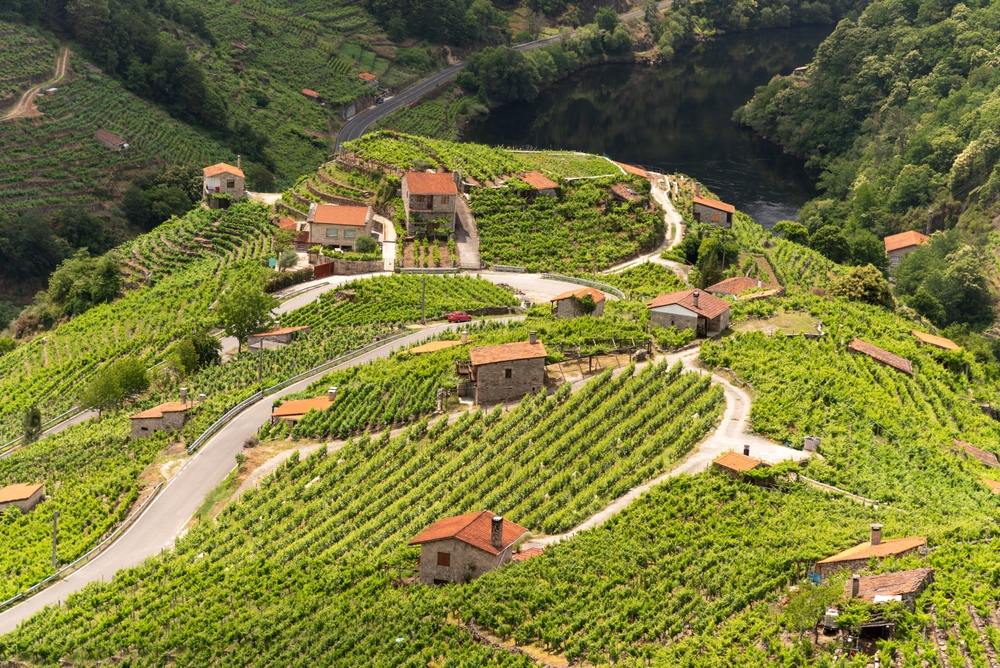
I keep coming back to this corner of the map for cliff-hanging terraces, rivers that glow at golden hour, and tasting rooms where the person pouring also pruned the vines. It’s easy to tag onto city breaks in Porto, Santiago de Compostela, or even Zaragoza, and you’ll sip whites with mountain freshness and reds with a spicy, herbal lift—without elbowing through tour buses.
“The best glass is the one poured when no one is rushing you.”
Search data backs up the quiet: Google Trends shows far less interest for “Ribeira Sacra” and “Bierzo” compared with “Rioja” or “Douro”—good news if you’re allergic to crowds. And recent research from the European Travel Commission points to a steady shift toward nature-rich, lesser-known regions, which these deliver in spades.
Ribeira Sacra, Spain — “Is it hard to get to?”
Not if you plan smart. I base myself in Monforte de Lemos for train access and wine bars, or in Parada de Sil for jaw-dropping canyon views. The vineyards cling to the vertiginous slopes above the Sil River, and every bend in the road feels like a screensaver.
- Getting there: Take a train to Ourense (easy from Madrid or Santiago), hop a quick regional to Monforte de Lemos, then taxi or e‑bike along the Sil. A car is handy but not essential.
- What to taste:Mencía reds with wild-berry fruit, herbs, and slatey bite; Godello whites that are mineral and textural. If you see Brancellao or Merenzao on a list, order a glass for something lighter and aromatic.
- Wineries to look up (book ahead):Adega Algueira (terrace restaurant above the river), Guímaro (benchmark Mencía), and small family cellars in Sober or Chantada.
- Scenic musts: Catamaran ride through the Sil Canyon from Santo Estevo; the viewpoint at Mirador de Cabezoás; the short PR‑G 98 trail for vineyard panoramas.
- Why now: The area’s millennia-old terraces are on Spain’s UNESCO Tentative List, so go before the spotlight gets bright.
Sample day: Morning boat on the Sil, lunch with river views, two pre-booked tastings, then a sunset stop at Mirador de Santiorxo. Tastings typically run €5–€10 and are often waived with a bottle.
Bierzo, Spain — “What grapes should I look for?”
Again, Mencía—but here it’s more floral and silky thanks to gentler slopes, slate soils, and varied aspects. White lovers should seek out Godello with a peppery, stone-fruit edge. The region revamped its labeling to spotlight place, so you can buy with confidence.
- Base:Ponferrada (great for bars and the Templar castle) or Villafranca del Bierzo (quieter, Camino charm).
- How to get there: Trains to Ponferrada from León, A Coruña, or Madrid; taxi to nearby villages. E‑bikes are perfect for gentle vineyard loops.
- On the label: Look for Vino de Villa (village wines) and Vino de Paraje (single-site) to understand the patchwork of terroirs. It’s an easy way to taste place without chasing cult bottles.
- Wineries with welcoming visits:Prada a Tope – Palacio de Canedo (cellar + restaurant + hotel), Pittacum (polished tours), and smaller producers around Valtuille de Abajo where the Camino threads through the vines.
- Extra credit: Hike the otherworldly red cliffs of Las Médulas (UNESCO Roman gold mines) just 40 minutes away.
What I order at a bar in Ponferrada: A glass of village-level Mencía from Corullón followed by a mineral Godello from high-altitude plots—perfect with cecina and a wedge of local cheese.
Serra de São Mamede, Portugal — “Is this still Alentejo?”
Yes—technically the Portalegre DOC—but it’s cooler, craggier, and higher than the Alentejo you might know. Think granitic peaks, cork forests, and stone-framed villages like Marvão and Castelo de Vide. The wines are fresher, more lifted, and incredibly food friendly.
- Getting there: From Lisbon, it’s about 2.5 hours by car. Public transport exists but is patchy—a car really helps here.
- What’s in the glass: Elegant reds from Trincadeira, Aragonez (Tempranillo), and old-field blends with a touch of Alicante Bouschet; crisp, stony whites from Arinto, Síria/Roupeiro, and Fernão Pires.
- Producers to book:Quinta da Fonte Souto (Symington’s high-altitude estate), Adega de Portalegre (local stalwart), Cabeças do Reguengo (old-vine magic). Expect intimate tours and unrushed chats.
- Slow moments: Walk the medieval walls of Marvão at dusk, visit the Roman ruins of Ammaia, then tuck into black pork and migas with a chilled local white.
Insider tip: Daytime highs get civilized breezes up here, so pack a light layer for evening tastings, even in summer.
When to go and what it costs
- Best months:April–June and September–October for mild weather, open roads, and the buzz of harvest. Summer works too—just book tastings early and aim for mornings.
- Tasting fees: Typically €5–€10; many waive with a purchase. You’re paying for time and access, not a conveyor belt.
- Meals: Rustic, generous, and wallet-friendly. A hearty lunch with a glass often lands between €10–€18.
- Transport:Train + taxi/e‑bike works great for Ribeira Sacra and Bierzo; a rental car shines in Serra de São Mamede.
- Booking rhythm: Email or WhatsApp 24–72 hours ahead. Confirm the day before, and don’t be shy about asking for a simple plate of local snacks with your flight.
If you had to pick just one of these for your next city break add-on, which one would you choose—and what would you pour first? Keep reading: the next stop heads north to a part of France where nutty whites and mountain reds quietly steal the show. You’ve heard whispers about a grape aged under a veil… want to know where to find it?
France beyond Bordeaux and Burgundy
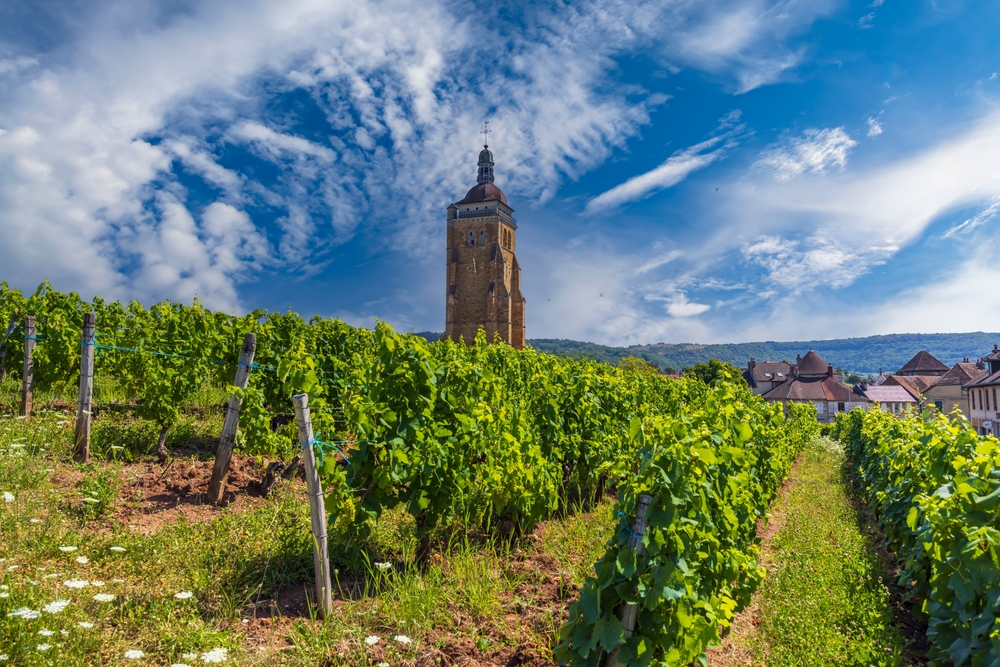
When the crowds chase grand châteaux, I slip into the quiet corners where France keeps its best secrets. Here, the pours are generous, the conversations unhurried, and the landscapes do something to your heart you’ll remember long after the last glass.
“A quiet cellar, cool stone underfoot, and a host with time—this is why we go where the buses don’t.”
Jura — “What makes Jura special?”
Small region, big personality. This is the land of Savagnin (topped-up and the classic oxidative style under a nutty voile), feather-light reds from Trousseau and Poulsard, and the mythical Vin Jaune—aged for at least 6 years and 3 months in barrel under a natural yeast layer. That rule isn’t folklore; it’s written into the AOC specifications and guarded fiercely by local producers.
Base yourself in Arbois or Poligny. You’ll find family-run caves where the winemaker pours, talks soils, and happily points you to the best cheese shop around the corner. Pairings aren’t optional here—they’re a way of life. Pop into a Fruitière for Comté or Morbier and you’ll understand why locals plan meals around Savagnin’s salty, walnut snap. The Vins du Jura board has a handy map and producer list if you like to plan.
- Don’t miss: A side-by-side of Savagnin ouillé (topped-up, pure citrus-mineral) vs. Savagnin under voile (hazelnut, curry leaf, sea breeze). It’s like hearing two accents from the same voice.
- Easy stops: Arbois’ central co-ops welcome walk-ins; many petit domaines prefer a quick email 48 hours ahead.
- Scenic bonus: The limestone cliffs and hidden valleys (reculées) around Château-Chalon make every viewpoint feel like a postcard.
Sample day: Morning tasting in Arbois, lunch of comté tartines in the square, then a short hop to Poligny for a cheese shop crawl and one last Savagnin with a slice of aged 24‑month Comté. Bring a cooler bag—you’ll need it.
Savoie — “Is it all ski villages?”
Yes—and that’s exactly the charm. Between lake towns and alpine peaks, Savoie pours some of the freshest whites in France and spicy, violet-scented reds with real lift. Grapes to know:
- Jacquère: Lightning-crisp, stony, made for mountain cheese and lake fish.
- Altesse (aka Roussette): More structure and blossom, ages beautifully.
- Mondeuse: Peppery red with alpine herbs and bright acidity.
Annecy makes a dreamy base—canals, a turquoise lake, and mountain views that turn every glass into a panorama. From here, visit small caves near Chignin, Apremont, and Jongieux by bus or e‑bike. Want a quick overview first? The “Maison des Vins” in nearby Chambéry (check hours) often runs curated tastings so you can map your favorites before heading out.
- Order like a local: Vin de Savoie Apremont (Jacquère) with a cold lake-fish platter, or Roussette de Savoie (Altesse) with tomme and cured ham.
- Quiet hours: Late mornings and early afternoons see the fewest visitors—perfect for more conversation, less rush.
- Label clues: Look for crus like Chignin-Bergeron (Roussanne) or Arbin (Mondeuse) if you want extra depth.
Taste test I love: Pour Jacquère from Apremont next to one from Chignin—same grape, different slopes, and you’ll feel the shift from citrus to mountain flowers.
Terrasses du Larzac (Languedoc) — “Will I find serious reds?”
Absolutely. Up on the foothills of the Larzac plateau, altitude and evening breezes keep things cool, so the reds—usually blends of Grenache, Syrah, Mourvèdre, with Carignan or Cinsault—carry freshness alongside wild garrigue spice. The area earned its own AOC status in 2014, and value for quality is still one of the best in France.
Base in Montpellier for restaurants and wine bars, or go slow in Lodève or Aniane to be closer to the vines. A car unlocks everything: stone-walled lanes, thyme-scented trails, and hilltop villages like Saint-Guilhem-le-Désert. Many estates host by appointment only, but the payoff is big—quiet tastings, old-vine stories, and often a barrel sample or two.
- Flavor map: Think black cherry, scrubland herbs, cracked pepper, and a cool-mineral finish—great with grilled lamb or a simple saucisse on the coals.
- When to sip: Late afternoons catch the vineyards glowing and the cellars cooling.
- If you love balance: Ask for vintages from cooler years or parcels higher up the slopes—winemakers here love geeking out on altitude.
Practical tips
- Best months: May–June or September for open roads and relaxed tasting rooms.
- Tasting fees: Typically €8–€15, often credited if you buy a bottle.
- How to book: Email 24–72 hours ahead; confirm the day before. Small estates really appreciate it.
- Transport basics:
- Jura: Train to Dole/Mouchard, then short connections to Arbois/Poligny; a taxi or e‑bike covers the last mile.
- Savoie: Annecy by train from Geneva or Lyon; buses and e‑bikes reach nearby crus.
- Terrasses du Larzac: Fly or train to Montpellier; rent a car for winery hops and garrigue walks.
- Eat well: Expect farm-to-table lunches with seasonal menus—book a table when you schedule tastings.
- Pack: Small daypack, water, and a soft-sided cooler bag for those “I can’t leave this behind” bottles.
- Etiquette: Spit when you want to keep going. Ask before picnicking on winery grounds. If you loved the tasting, buy a bottle—it’s the best thank-you.
I’ve got a question for you: after crisp alpine whites and spice-laced reds, are you ready for volcanic soils and sky-high terraces that push flavor even further? Wait till you meet the next set of wines just across the border—think lava trails, stone terraces, and bottles that punch way above their price. Which will win your heart first: smoky volcano or cool mountain ridge?
Italy’s wild corners: volcanic and alpine
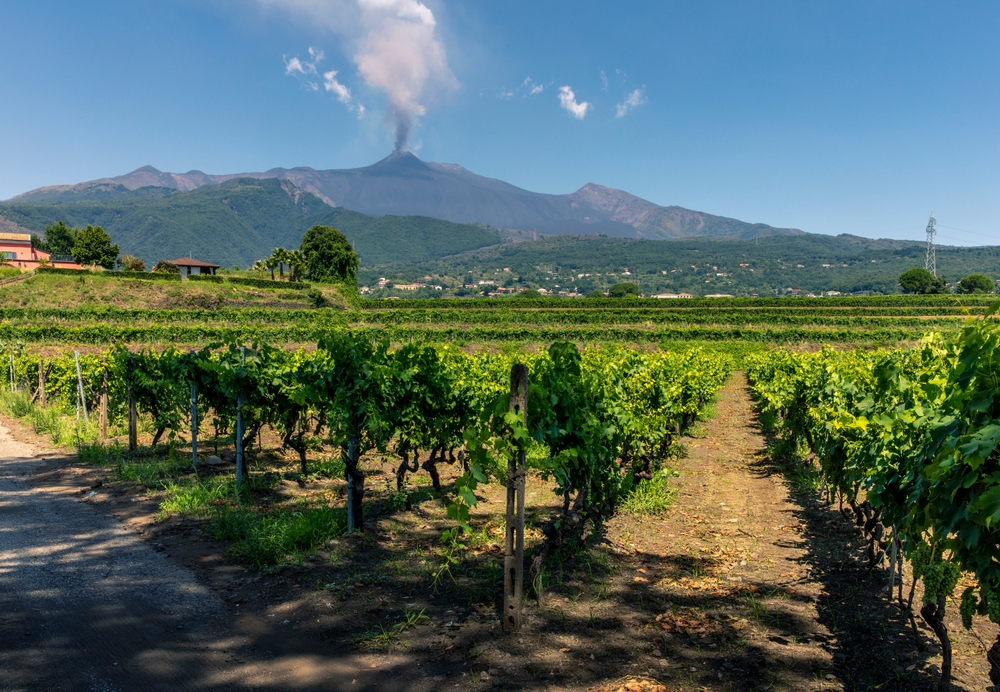
Volcanic ash, alpine wind, and hand-built terraces shape wines that are bright, structured, and wildly memorable. The views are cinematic, plates are straight-from-the-farm, and English is common enough that tastings feel easy—without losing that “you’re-in-on-a-secret” vibe.
“Some places you taste with your mouth. Here, you taste with your eyes, your boots, and the wind.”
Mount Etna, Sicily — “Is this the best value in Italy?”
For many, yes. Etna’s black soils and high altitudes (often 700–1,000 m) turn out reds with grip and perfume, and whites that taste like salted citrus.
What to drink: Nerello Mascalese (often with a touch of Nerello Cappuccio) for pale, savory reds; Carricante for mineral, lemon-saline whites. Look for Etna Rosso and Etna Bianco—and if you see single-vineyard “contrada” names like Guardiola or Feudo di Mezzo, you’re in for a sense of place.
Where to base: Linguaglossa or Randazzo on the north slope for easy access to wineries and trails. Fly into Catania; rent a car or hop the Ferrovia Circumetnea to loop around the volcano and taxi to estates.
How to spend a day:
- Morning: 1–2 tastings near Passopisciaro or Solicchiata (book ahead; most hosts are hands-on).
- Lunch: a trattoria in Randazzo—grilled sausage, wild greens, and roasted potatoes cooked in lava-stone ovens.
- Afternoon: a Carricante-focused estate, then a short lava walk on the Etna Nord side or the easy stretch of the Pista Altomontana.
Why it works: High elevation preserves acidity even in warm years—one reason these wines feel fresh and food-friendly. Etna and Valtellina are both recognized by CERVIM for “heroic viticulture” (steep slopes, terraces, altitude), which is a fancy way of saying the vineyards look impossible—and the results are worth it.
Valtellina, Lombardy — “How is it different from Barolo?”
This is Nebbiolo’s alpine alter ego—here called Chiavennasca—grown on sun-baked, stone-walled terraces above the Adda River. Expect lighter color, red cherry, alpine herbs, and fine, stony tannins rather than Barolo’s heft.
What to look for:Valtellina Superiore DOCG from historic subzones—Sassella, Grumello, Inferno, Valgella, Maroggia—for elegant structure; Sforzato/Sfursat di Valtellina DOCG for a dry, air-dried grape style with more power.
Where to base: Sondrio is perfect for car-free sipping; Tirano if you want to connect with the Bernina line. The scenic local rail between Morbegno–Sondrio–Tirano makes it simple to pair tastings with walks.
Move like a local:
- Walk or e-bike the Via dei Terrazzamenti and Sentiero Valtellina to thread villages, cellars, and viewpoints without traffic.
- Hop a short train to Tirano and, time permitting, ride the first stretch of the Bernina line for glacier views, then roll back for a late-afternoon tasting.
Why it sticks with you: The dry-stone terrace craft—recognized by UNESCO—channels heat by day and releases it at night, ripening Nebbiolo gently and evenly. The result is precision over power.
Irpinia, Campania — “What should I taste?”
Cool hills inland from Naples, volcanic ash mixed with limestone, and three DOCG heavy-hitters. This is Italy’s quiet benchmark for ageworthy whites and structured reds—without the sticker shock.
Core bottles:
- Greco di Tufo DOCG — smoky-citrus, almond, and a firm, mineral spine.
- Fiano di Avellino DOCG — pear, hazelnut, fennel, and a waxy texture that blossoms with a few years in bottle.
- Taurasi DOCG (Aglianico) — dark cherry, tobacco, and volcanic grip; a winter red built for stews and grilled meats.
Where to base: Avellino works for access and dining; add short hops to Tufo, Atripalda, and Taurasi. A car helps to thread the hills and pop into family-run estates.
Pair it right: Caciocavallo, ragù Napoletano, porcini, and the famous Montella PGI chestnuts. Hosts often serve cured meats and rustic breads with tastings—ask for a light board and you’re set.
Good-to-know
- Best seasons: Spring and fall shine—clear roads, cellar time, and easy reservations.
- Typical tasting fees: €10–€20, often waived with a purchase. Expect generous pours and unhurried chats.
- Bookings: Email or web forms 48–72 hours ahead. For weekends and harvest, lock in earlier.
- Moving around: Etna and Irpinia are easiest with a car; Valtellina works well by train plus e-bike or short taxis.
- Agriturismi lunches: Reserve a fixed menu at a farmhouse—great value, local produce, and wines poured in context.
- Bring a cooler bag: Whites and rosés appreciate the chill between stops.
- Shipping: Many estates can ship within the EU; packable bottle sleeves help if you’re checking a bag.
Quick nerd note: mountain and volcanic vineyards tend to keep acidity thanks to altitude and nighttime cooling—part of why these wines feel energetic even in warmer years. Agencies like CERVIM track this “heroic” vineyard effect across Europe, and tasting here is the best way to feel it for yourself.
If these terraces and lava trails have you grinning, wait until you see where hospitality meets heritage for the price of a city coffee. Think bikes between cellar lanes, dry Furmint that crackles, and castles on the skyline—curious how easy it is to do the next region by bike?
Central and Eastern Europe that will surprise you

I come here when I want warmth you can feel. Not just in the glass, but at the door—someone’s grandmother waving you into a cellar, a winemaker pulling a thief from the cask with a grin. Expect crisp whites, aromatic blends, and sweet-wine legends, with castles and cobbled squares as your backdrop.
“A vendég a háznál áldás.” — Hungarian proverb
A guest in the house is a blessing.
South Moravia, Czech Republic — “Can I do this by bike?”
Yes—and it’s practically designed for it. Base yourself in Mikulov (pastel Baroque squares, limestone cliffs) or Znojmo (Romanesque rotunda, river bends). The region is webbed with waymarked bike paths and “sklepy” cellar lanes where doors open to Riesling, Grüner Veltliner (here called Veltlínské zelené), aromatic Pálava, and peppery Frankovka (Blaufränkisch).
There are over 1,200 km of signposted Moravian Wine Trails, with easy e-bike rentals in every base town. The UNESCO-listed Lednice–Valtice Cultural Landscape strings together chateaus, follies, and lakes you can hop between without touching a highway.
- Perfect pedal day: Mikulov → Pavlov (stop for Riesling at lakeside estates) → Dolní Věstonice (coffee by the Nové Mlýny lakes) → circle back via vineyard paths. Book tastings at Sonberk (terrace views), Reisten (stony, saline whites), or Volařík (aromatic styles done clean).
- Znojmo side: roll to the striking, modern Lahofer winery amphitheater for structured Veltliner and dry Riesling, then cruise vineyard lanes back into town for cellar bars on Kollárova.
Why it works without a car: trains from Prague to Břeclav or Brno are frequent; short local hops put you in Mikulov/Znojmo. Bike hire is everywhere, and routes keep you close to tasting rooms. The Moravian Wine Trails foundation keeps maps updated.
Reality check: Tastings are usually €6–€12 and often waived with a bottle. Book 24–48 hours ahead for family cellars; cellar lanes sometimes open evenings without appointments.
Tokaj, Hungary — “Is it only sweet wine?”
Not even close. The region’s modern calling card is dry Furmint—electric, mineral, and wildly food-friendly. The famous Tokaji Aszú sweet wines are still the crown jewels, but you’ll find bone-dry bottlings with natural acidity that makes dishes sing, from roast chicken to paprika fish soup.
Tokaj’s volcanic tuff cellars are a wonder on their own, and the entire landscape is a UNESCO World Heritage Site. Base in Tokaj town or Tarcal for easy walks between historic producers and new-wave boutiques.
- Where I send first-timers:Disznókő for a clear intro to styles; Barta for single-vineyard dry Furmint; Dereszla for caves and classic Aszú; Erzsébet Pince for intimate tastings where someone inevitably brings out something special from the family stash.
- What to taste: Dry Furmint, Hárslevelű blends, late-harvest cuvées, and if you’re curious, a glass of Szamorodni to understand oxidative tradition.
- Pairing moments: Aszú with blue cheese or goose liver is a revelation; dry Furmint with grilled trout or simple roast root veg is the weeknight wine you’ll start hunting for back home.
Good to know: Most estates offer English tours if you email ahead. Train time from Budapest is about 2.5–3.5 hours with an easy change, or rent a car for side trips to volcanic viewpoints.
Geek note: Tokaji styles are tightly regulated, which is why tastings here feel like a short course in wine culture. If you like understanding the “why,” the cellar guides are great teachers.
Small Carpathians, Slovakia — “Is English spoken at wineries?”
Often—especially in and around Pezinok and Modra. This is one of Central Europe’s most approachable wine corridors, starting just outside Bratislava. You’ll taste Riesling, Grüner Veltliner, and Blaufränkisch/Frankovka with a growing roster of natural-leaning producers and sleek tasting rooms that still feel personal.
Base in Pezinok or Modra (famous for majolica ceramics) and string together stops along the Little Carpathian Wine Route. Larger estates handle walk-ins on weekends; small family wineries shine with appointments.
- Easy starter trio:Karpatská Perla (Šenkvice; clean, precise whites), Elesko Wine Park (Modra; modern art + tasting in one spot), and a cozy Modra or Pezinok vinotéka for by-the-glass local flights.
- What’s trending: Frankovka with verve (think sour cherry and spice), skin-contact experiments, and site-labeled Rieslings from stony slopes just above town.
- Getting there: 20–30 minutes by train or bus from Bratislava’s center; cheap taxis connect villages. E-bikes are becoming more common for gentle hill routes.
Language tip: If you’re nervous, email in English—responses are fast and friendly. On-site, a few words of Slovak (“Prosím” and “Ďakujem”) earn big smiles.
Costs and timing
- Tasting fees: usually €5–€12 for 4–7 wines; many waive with a purchase.
- When to go: Late spring (May–June) and early fall (September–October) hit the sweet spot—open roads, harvest buzz, and mild temps. Winters are cozy and cheap, with more cellar time.
- Getting around: Excellent rail links from Prague (to Brno/Břeclav), Budapest (to Tokaj), and Vienna (to Bratislava/Pezinok). Add short taxis, local buses, or e-bikes.
- Booking: Email 24–72 hours ahead for small estates; bigger houses and town wine bars often take walk-ins.
- Budget check: Plan €20–€35 per person per day for tastings, plus a bottle or two you’ll want to bring home.
- Pro tip: Bring a lightweight cooler bag; many shops sell chilled bottles for sunset viewpoints—no one regrets a cold Furmint on a warm evening.
Feeling the pull of limestone and sea breezes too? Next up: a stretch of coast where a glass of Malvazija can turn truffle risotto into a memory—curious which hilltown I use as my base and why the roads stay blissfully quiet?
The Adriatic and the Balkans on the rise
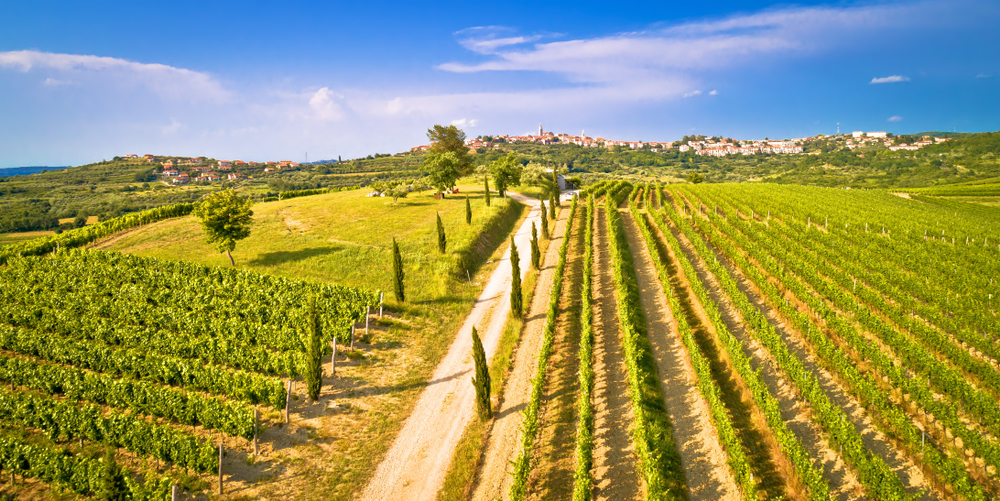
Salty air, limestone hills, and grapes with stories older than the road you drove in on. This corner of Europe is hitting the sweet spot: serious wine, low-key tasting rooms, and meals you’ll tell friends about for years. UNWTO’s work on wine tourism has long shown that slower, rural tasting trips lead to higher satisfaction and deeper local spend—exactly what you feel here, glass after glass.
“Go slow enough that the wind sets your pace—and watch how every pour tastes better.”
Istria, Croatia — “What’s the must-try white?”
Malvazija Istriana. Order it fresh and zesty for coastal lunches, then try a skin-contact version for amber color, tea notes, and texture. Teran brings the red snap—peppery, vibrant, and perfect with truffles from the Motovun forest.
I base myself in Motovun for hilltop sunsets or Rovinj if I want morning swims. Pula Airport makes arrivals easy; Trieste and Ljubljana are simple jumps by car. The wine roads are well marked, and tastings feel personal rather than scripted.
- What to taste: Malvazija (fresh vs. macerated); Teran; Istrian olive oil side-by-side. Istria has repeatedly been named a top olive oil region by Flos Olei (check the Istria Tourist Board’s updates: Istria official site).
- Good spots: Family estates around Momjan, Kaldir, and Kanfanar. Expect €8–€15 tastings; many waive fees with a bottle.
- Easy add-ons: The Parenzana cycling trail, Grožnjan (artists’ village), truffle hunts near Livade, and long lunches of fuži pasta with shaved truffles.
- Get there: Pula (PUY) for the closest airport. From Trieste, it’s ~1.5–2 hours by car to central Istria.
Ask hosts to pour Malvazija two ways—stainless-steel fresh, then skin-contact. It’s the quickest way to “get” Istria in one sitting.
Vipava Valley, Slovenia — “Natural wine fans—worth it?”
Absolutely. The burja wind scrubs the vines, the soils are flysch and limestone, and the vibe is hands-on. You’ll meet winemakers who farm organically or biodynamically, pour in their kitchens, and talk about vintages like they talk about the weather.
Indigenous grapes shine: Zelen (herbal, citrusy, slightly saline) and Pinela (pear, almond, and a soft glide). Slovenia’s official tourism pages highlight these as Vipava originals—handy primers if you want to learn before you go (slovenia.info).
- Base: Ajdovščina or Vipava town for easy hops between small cellars; Ljubljana is ~1 hour via the A1.
- What to expect: Minimal-intervention whites, some longer macerations, and elegant reds. Tastings usually €10–€15 with bread, olive oil, and sometimes house-cured pršut.
- Pro move: Book one “classic” tasting (fresh Zelen/Pinela) and one “skin-contact” session to feel the spectrum. If an estate offers amphora or extended lees aging, say yes.
- Food: Pršut sliced to order, tolminc-style cheeses, and the hearty jota stew if the wind kicks up.
Leave time for a coffee in stone-built Štanjel, then a sunset tasting with the Nanos ridge glowing above. If you’re chasing purity and place, this valley delivers.
Tikveš, North Macedonia — “Is it easy to plan?”
Yes—especially with a car. The Vardar River corridor is dotted with estates that welcome visitors, and prices are some of the lowest in Europe. Vranec is the headline red: dark fruit, spice, and a big, generous frame. Whites are refreshing and food-friendly; keep an eye out for Temjanika (aromatic Muscat) alongside international varieties.
Set your base in Kavadarci or Demir Kapija; Skopje is ~1.5–2 hours up the A1, making it easy to pair wine time with city walks or a quick escape to Matka Canyon.
- Tastings: 150–400 MKD (€2.50–€7) is common for flights; many estates offer cellar tours and hearty plates if you book ahead. Start with the region’s flagship producers, then add a family cellar for contrast.
- What to try: Single-vineyard Vranec, oak vs. no-oak Temjanika, and local blends with indigenous backbones. The national association has a good grape primer: Wines of Macedonia.
- Food pairing: Tavče gravče (baked beans), ajvar, Shopska salad, and pastrmajlija with a bold Vranec—it just works.
- Add-ons: UNESCO-listed Lake Ohrid for cool evenings and old-town walks; wine bars in Skopje for one last flight before you fly.
If you’ve been priced out of bigger-name regions, this is where your tasting budget stretches furthest without giving up quality or warmth.
Travel notes
- When to go: April–June or September for mild days and open roads. Mid-July to mid-August gets hot and busier on the coast—book early or go early morning.
- How I plan days: 2–3 estates max, long lunch in between, and one viewpoint stop (Motovun walls, Nanos ridge pull-off, or a sunset layby above Demir Kapija).
- Booking: Small estates appreciate 24–72 hours notice. Many respond quickly via email or Instagram. Ask for a plate of local cheese/cured meats with your flight—it’s common and inexpensive.
- Costs: Expect €8–€15 per tasting in Croatia/Slovenia; €3–€7 equivalent in North Macedonia. Cash is handy at family cellars.
- Getting around: Car unlocks everything. For a lighter footprint, base in Rovinj/Motovun (Istria) or Ajdovščina (Vipava) and use e-bikes or taxis for close-by estates. In North Macedonia, distances are longer—self-drive is simplest.
- What to ask for: Side-by-side Malvazija (fresh vs. skin-contact), a Zelen/Pinela comparison, and a Vranec vertical if available. You’ll learn more in 30 minutes than in a week of reading.
- Taking bottles home: Many Croatian and Slovenian wineries can ship within the EU. From non‑EU origins, check your customs allowance and pack a wine sleeve in your checked bag.
- Useful reads: Quick primers on grapes and routes: Istria wine roads, Vipava Valley, Wines of North Macedonia.
Ready for something wilder—lava walls, ocean spray, vines on the edge of the map? In the very next section I’ll show you where to sip island wines with sea mist in the glass—want to know the easiest route to get there without blowing your budget?
Atlantic and island frontiers
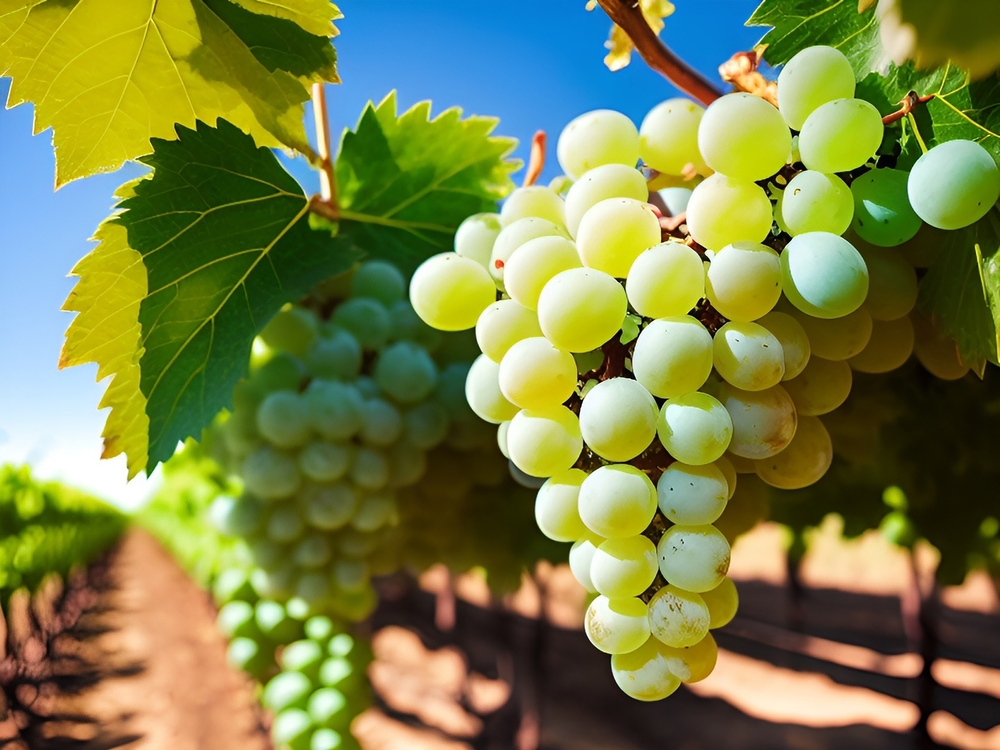
Windswept vines, lava-black stone walls, and sea-spray in the air—this is wine at the edges of Europe. If you’ve been craving bottles with a salty snap and stories you can feel under your feet, set your map to these islands. The tastings are small, the scenery is outrageous, and the wines taste like the ocean met the mountains and shook hands.
Pico, Azores, Portugal — “How do I get there?”
Fly to Pico (PIX) via Lisbon or via Ponta Delgada (PDL) on São Miguel, then connect. Another smooth option: fly into Horta (Faial) and hop the 30-minute ferry to Madalena—super easy and scenic. I base myself in Madalena for walkable wine bars and quick drives to the coast-hugging vineyards. Rental cars are limited on Pico; book early.
The vineyards are unlike anywhere else: tight, basalt-lava plots called currais or lajidos, protected by low stone walls that blunt Atlantic winds and salt. The whole landscape is a UNESCO World Heritage site, which tells you how special (and fragile) it is. Expect mineral, sea-kissed whites built for seafood and sunsets.
- What to taste: Arinto dos Açores (a native grape, distinct from mainland Arinto), Verdelho, and Terrantez do Pico—typically citrusy, saline, and textured, with a volcanic edge.
- Easy appointments: Azores Wine Company (near Madalena) runs thoughtful, English-friendly tastings; PicoWines Cooperative pours a great snapshot of the island. Email 48–72 hours ahead.
- Pairings to try: Grilled limpets (lapas) with garlic and butter, tuna belly, barnacles when in season.
- Costs: Tasting flights usually €10–€20; many waive with a purchase. Boat to Faial for a day (whale-watching + a harbor lunch) and be back by dinner.
“The stone-walled plots aren’t just beautiful—they’re functional. UNESCO notes how the walls create a protective microclimate, helping vines thrive in brutal Atlantic conditions.”
Tenerife, Canary Islands, Spain — “Which area is best for tastings?”
For a compact, rich tasting day, I love Valle de la Orotava and Tacoronte-Acentejo on the greener, cooler north side. Base in La Orotava (for historic streets and views) or La Laguna (for dining and easy access). Roads are winding; 2–3 estates per day is the sweet spot.
Here’s the headline: Tenerife’s vineyards are phylloxera-free, so many vines are ungrafted and very old. In Orotava, watch for the wild braided training system (cordón trenzado)—century-old arms woven like thick ropes along the ground. Soils are volcanic and varied, and altitudes swing from sea level to well over 1,000 meters, which keeps wines fresh even in sun-baked spots.
- What to taste: Listán Negro (savory, peppery reds), Listán Blanco (a.k.a. Palomino, but here it’s racy and volcanic), plus Vijariego, Baboso, and Negramoll for characterful reds.
- Where I book: Suertes del Marqués (Orotava) for single-parcel precision; Bodegas Monje (Tacoronte) for a friendly, visit-ready setup with ocean views. Emails get quick replies.
- Food to match:Papas arrugadas with mojo rojo/verde, grilled octopus, and smoked goat cheese.
- Costs: Typically €8–€15 per tasting; reserve ahead—Saturdays fill up.
Pro tip: Tenerife has several DOs (Orotava, Tacoronte-Acentejo, Ycoden-Daute-Isora, Abona, Valle de Güímar). If you want a second day, add Ycoden-Daute-Isora for altitude-driven whites and spicy reds under Teide’s massive shadow.
Kefalonia, Greece — “Is there more than beach time?”
Absolutely—and it’s crisp, lemon-zest Robola from high limestone slopes on Mount Ainos. Vineyards sit at 450–800 meters, so even summer wines stay pure and brisk. Robola of Kefalonia has its own protected status, and the style is all about citrus, white flowers, and a gentle salt note that begs for grilled fish.
- Where to base: Argostoli is central and relaxed, with easy dining and access to the Omala Valley.
- Who to visit: Robola Cooperative (straightforward, educational tastings), Gentilini (precise, contemporary takes), Sclavos (characterful, often low-intervention), Petrakopoulos (site-focused bottlings). Email a couple of days ahead.
- What to taste: Robola (bright and stony), aged Robola if available (almond and herb complexity), plus local reds like Mavrodaphne dry blends.
- Costs and logistics: Tastings usually €5–€12. Kefalonia has seasonal direct flights May–October; otherwise connect via Athens. A car makes life easier; distances are short but hilly.
Between tastings, walk the black-fir trails on Mount Ainos or time a late swim at Antisamos or Myrtos—then hit a seaside taverna for grilled sardines and a chilled Robola carafe. Simple, perfect.
More inspiration and research
I keep a running list of lesser-known wine areas I want to check out next, and these two round-ups are gold when you’re building your shortlist:
- The Telegraph: Europe’s best unsung wine regions
- Gastrotravelogue: 11 interesting regions where you can enjoy wine in Europe
Ready to turn this into a real trip? Next up I’ll map out an easy 7-day route with day-by-day tasting stops, a simple budget, and the local etiquette that gets you the best pours—want the exact plan I use myself?
Plan it like a pro: routes, budgets, and tasting etiquette
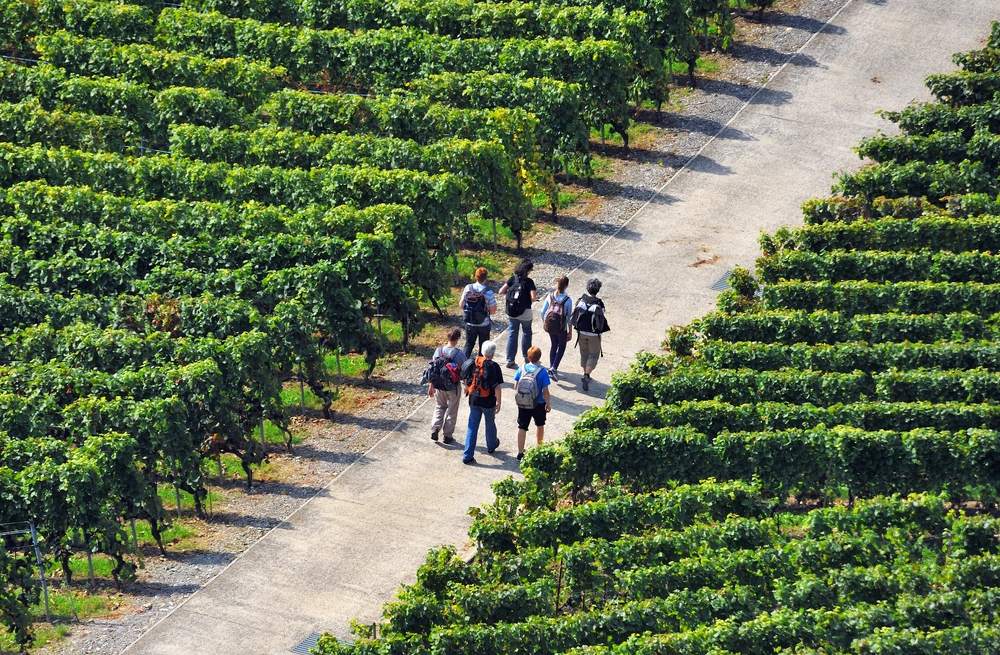
I promised plug-and-play routes, clean budgets, and a few unspoken rules to keep tastings smooth. Here’s my no-stress way to turn great bottles into a great week—without needing a tour bus or a second mortgage.
Two easy 7-day routes (car-light options included)
Route 1: Jura + Savoie (fly into Geneva or Lyon)
Trains and e-bikes do the heavy lifting. Think Savagnin and Comté one half of the week, crisp Alpine whites and lake views the other.
- Day 1 — Arrive, settle, simple walk
Land GVA or LYS. TER train to Dole, quick hop to Arbois or Poligny. Check in, stroll the old town, cheese and a glass at a cozy caveau. - Day 2 — Arbois & Pupillin
Book 2–3 tastings within a 10–15 minute ride (e-bikes available in town). Compare topped-up (ouillé) vs. oxidative Savagnin, and try Trousseau. Lunch in Arbois; sunset at the vineyards above Pupillin. - Day 3 — Château-Chalon & Cascades du Hérisson
Morning tasting in Voiteur/Château-Chalon, then a scenic stop at the Hérisson waterfalls. Optional detour to Fort des Rousses for Comté aging caves. Evening train to Annecy (or Chambéry) for the Savoie leg. - Day 4 — Lake day + Chignin/Apremont
Base in Annecy. E-bike or bus to nearby producers around Chignin/Apremont. Two tastings, lake swim, evening in the old town. - Day 5 — Jongieux & Marestel
Focus on Altesse from Marestel and a peppery Mondeuse. Picnic viewpoint above the Rhône. Keep it to 2 tastings; enjoy a long lunch. - Day 6 — Bauges or Chartreuse
Short hike in the Bauges Regional Park, then one flexible tasting in Seyssel or Frangy. Try the light, floral Jacquère. Dinner in a farm-to-table bistro. - Day 7 — Last sips, roll out
Morning tasting or market time. TER to Geneva/Lyon, fly home with a couple wrapped bottles.
Car-light notes: TER trains link Dole–Arbois–Poligny and Lyon/Geneva–Annecy–Chambéry. Local buses run but can be sparse mid-day; that’s where e-bikes shine for short hops between villages.
Route 2: Ribeira Sacra + Bierzo (train via Ourense/Ponferrada)
Steep river canyons, ancient terraces, and silky Mencía. All reachable on regional trains with short taxi lifts.
- Day 1 — Ourense to Monforte de Lemos
Fly into Santiago or Madrid; train to Ourense then to Monforte. Check in, evening tapas on the square. - Day 2 — Sil Canyon (east bank)
Pre-book a driver or taxis for a loop near Parada de Sil. Two tastings, plus a stop at Mirador de Cabezoás and a Sil river boat cruise. - Day 3 — Miño side + Romanesque gems
Chantada area for 2 tastings (Mencía and Godello). Visit a hillside church; slow lunch with river views. Head back to Monforte. - Day 4 — Monforte morning, train to Ponferrada
Monastery of San Vicente do Pino or the rail museum. Afternoon train to Ponferrada (Bierzo). Evening stroll and wine bars. - Day 5 — Valtuille & Villafranca del Bierzo
Two tastings among old-vine plots. Try village wines (vino de villa) for a sense of place. Easy dinner in Villafranca. - Day 6 — Las Médulas + Godello
Morning hike at the red-earth UNESCO site. Afternoon Godello tasting in Cacabelos or nearby. Museum of Wine if time allows. - Day 7 — Castle & roll out
Templar castle at Ponferrada, then train to Madrid/León for flights.
Car-light notes: Renfe connects Santiago/Ourense/Monforte and Ponferrada. In canyon zones, taxis or a pre-booked driver are worth it. E-bikes are spreading—ask your stay for rentals.
What to pack and how to taste like a local
- Daypack basics: refillable bottle, snacks, light jacket, sunscreen, portable battery, and a soft bottle sleeve (for the keeper bottle).
- Cooler bag + ice pack: keeps your cheese and a white bottle happy between stops.
- Note-taking: use your phone’s note app or voice memos. Snap the back label with vineyard, vintage, and a quick tasting line you’ll understand later.
- Spit without drama: every winery expects it. WSET teaches spitting as standard to keep your senses sharp; it also helps you stay safe to travel between appointments. If you’re driving, keep it non-negotiable.
- Buy what you love: if a tasting hits, grab a bottle. It’s better than tipping and supports the people pouring.
- Confirm the day before: a simple “See you at 10:30?” on email or WhatsApp is gold.
- No strong perfume/cologne: it hijacks the glass and the room.
- Ask before wandering vineyards: they’re workplaces first; gates and posted paths exist for a reason.
Booking, budget, and language tips
- How to book: email the winery’s site or booking form 3–7 days out. In Spain and Portugal, WhatsApp replies are often the fastest. Keep it short: date, time window, people, language, and if you’re arriving by taxi.
- Daily tasting budget: plan on €20–€40 per person for 2–3 visits. Many places waive fees with a purchase. Bring some cash for tiny family cellars.
- Transit costs (typical): TER/Regional trains €8–€25 per leg; e-bike €25–€40/day; pre-booked drivers in rural zones €120–€180/day; canyon boat cruises €15–€25.
- Food and stays: lunches €15–€30; dinners €20–€40; midrange rooms €70–€150. Agriturismo-style lunches are terrific value—book them when you confirm tastings.
- Shipping vs. packing: inside the EU, a 6-bottle shipment often runs €40–€80 domestically and €60–€120 cross-border. To the US, €150–€250+ with duties. Wine sleeves in checked bags are the value play.
- Language that opens doors:
– France: “Bonjour/Bonsoir,” “Merci beaucoup,” “Est-ce que je peux réserver une dégustation?”
– Spain (Galicia/Bierzo): “Hola,” “Buenos días,” “¿Tienen cata a las 11:00?” “Gracias.” In Galicia, a friendly “Bo día” gets a smile.
Keep it simple and warm; it’s more about tone than grammar. - Maps that won’t fail you: make a Google Maps list of wineries and viewpoints, download offline maps, and pin your taxi stands. It saves the day when valleys go low-signal.
Safety note: Most European BAC limits are 0.5 g/L or lower (0.2 in some countries), according to the European Transport Safety Council. That can be reached faster than you think. If you’re behind the wheel, spit everything or book a driver.
Source: ETSC
Bonus thought: If you want to keep your footprint light, trains are your friend. The European Environment Agency reports rail can cut emissions dramatically versus car or plane on the same route—another reason these car-light routes feel good. See the EEA’s transport comparisons here: eea.europa.eu.
Final toast
Keep it simple: pick one cluster, book 2–3 tastings a day, and leave space for a long lunch or an unplanned viewpoint. The best moments are rarely on the spreadsheet.
When you get back, tell me what you loved on the blog. I’m always looking for the next great glass to point you toward—ideally with no tour bus in sight.